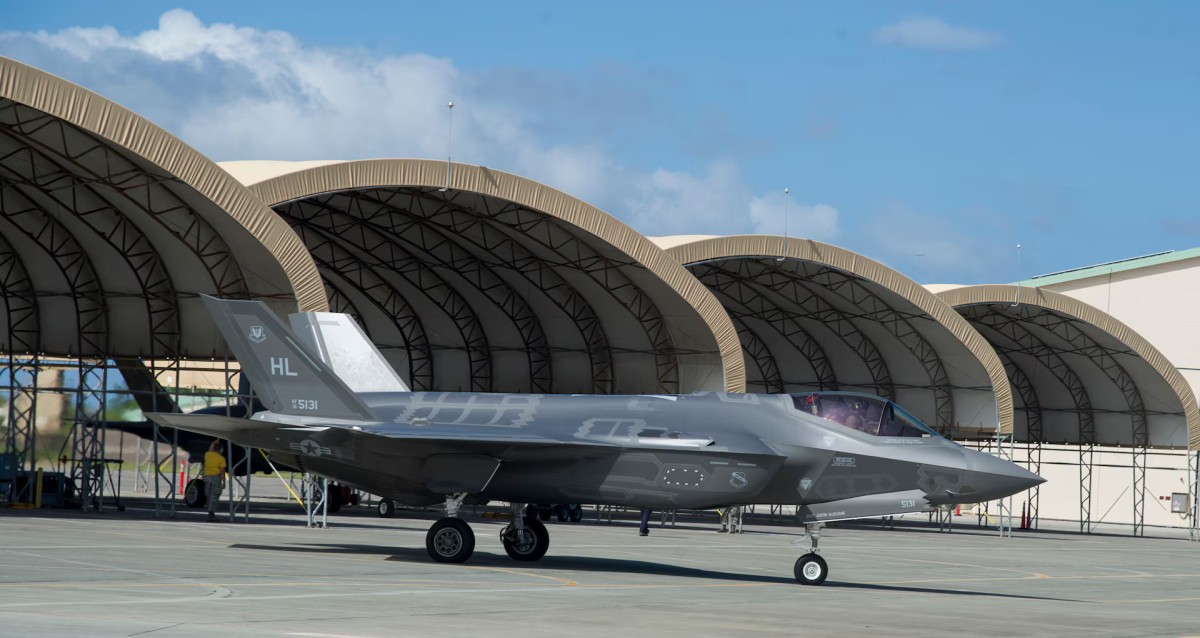The massive fortification of China’s air bases in recent years has given it a significant advantage over U.S. military airfields, especially in the event of a conflict in Taiwan, according to a new Hudson Institute report.
Over the past decade, the Chinese government has undertaken a massive effort to “harden” its airfields, using enough concrete in the process to build a four-lane highway stretching from Washington to Chicago. , said in a report titled “Concrete Sky: Air.” Base hardening in the Western Pacific. ”
China has been working to expand and strengthen its airfields in what the report calls a “nationwide, coordinated operation.” The goal is to withstand large-scale attacks, with a particular focus on protecting aircraft during intense air combat.
The analysis, written by Timothy A. Walton, a senior fellow at the think tank, and Thomas H. Shugart, a nonresident senior fellow at the Center for a New American Security, shows that the number of hardened aircraft shelters designed to protect aircraft is It is emphasized that it is increasing. Enemy attacks more than doubled, from 370 to more than 800 attacks.
Meanwhile, the number of unreinforced shelters has rapidly increased from 1,100 to more than 2,300, bringing the total number of evacuation shelters nationwide to more than 3,100. These shelters are critical to protecting China’s vast fleet of fighter jets during conflicts.
Fortification efforts are particularly concentrated within 1,000 nautical miles of the Taiwan Strait, which could lead to heavy fighting in the region if tensions between China and Taiwan escalate.
Su-57 and F-35 “collide” at Indian Air Show? Russia to debut stealth fighter jet in India. President Putin may make another proposal to IAF
In the region, China has installed more than 650 hardened shelters and nearly 2,000 non-hardened shelters at 134 air bases. In contrast, the United States has only added two reinforced shelters and 41 unreinforced shelters in the same area, mainly at bases outside South Korea.
The report paints a vivid picture of the disparity in airfield capabilities between China and the United States and its allies. Considering air bases in South Korea and the Philippines, the combined regional airfield capacity of the United States and its allies is approximately one-third that of China.
This imbalance is of particular concern because it means that China can sustain air operations much more effectively than the United States and its partners in the event of a conflict.
BrahMos: Another neighbor of China is considering acquiring Indo-Russian cruise missiles. You may be interested in ALCM
This operational advantage could encourage China to act pre-emptively in a conflict, the report suggests. China’s vast airfield fortifications give the United States and its allies the ability to overwhelm or destroy U.S. air forces in the region with significantly fewer attacks than it would take to neutralize China’s air force.
The report also highlights the vulnerability of US airfields in the region. Many U.S. air bases lack the heavy protection found at Chinese facilities, leaving them vulnerable to missile attacks.
For example, China could disable U.S. military aircraft and fuel depots in Iwakuni, on Japan’s main island of Honshu, with just 10 missiles.
Additionally, the United States will face serious logistical challenges. The closest U.S. military base to Taiwan is Kadena Air Base on Japan’s Okinawa Island, just 590 miles from the island. However, maintaining sustainable air operations from these far-flung bases can be difficult.
‘We can replace India’ – After drones and maybe tanks, Turkey says we can take over Delhi’s role in Bangladeshi imports
Growing Chinese missile threat
The report follows the Pentagon’s annual assessment of China’s military capabilities, highlighting China’s significant increase in medium-range ballistic missiles (MRBMs), with the number increasing to around 300 in just over a year. The number of occurrences increased.
These missiles have a range of 621 to 1,864 miles and can reach U.S. military bases throughout the First Island Chain, a strategic line of defense that includes Japan, Taiwan, and the Philippines.
The Pentagon also notes that China’s Rocket Force, which controls ground-based missiles, regularly conducts live-fire exercises targeting mock airfields, bunkers, aircraft, and ships, thereby increasing its ability to respond to various counterintervention scenarios. He pointed out that
‘It’s like an atomic attack’: US Air Force deploys large numbers of MAFFS-equipped C-130s to fight devastating wildfires
Satellite images have previously revealed full-scale models of U.S. military facilities, including aircraft carriers, that are believed to be potential missile targets.
While past conflicts in the Middle East have given U.S. forces the advantage of deploying to forward airfields uncontested, experts believe a conflict with China would present a very different and much more difficult environment. are.
Chinese military strategists have identified forward air bases, especially airstrips, as the Achilles heel of U.S. airpower projections, given their vulnerability to missile attacks.

This alarming scenario has not gone unnoticed by US lawmakers. In May 2024, 13 members of Congress wrote a letter to the Secretary of the Air Force and Secretary of the Navy highlighting the risks posed by the Chinese missile threat.
Ukraine war: NATO takes ‘full control’ of Poland’s air defense just days before Trump takes office
They warned that such vulnerabilities “significantly weaken our nation’s ability to respond in a conflict,” and said they are building hardened aircraft shelters, underground bunkers, and other facilities to increase the resiliency of U.S. military bases in the Indo-Pacific region. He called on the Department of Defense to prioritize infrastructure construction.
However, Shugart and Walton’s report emphasizes that the U.S. military is more focused on advancing modern aircraft than addressing the serious threats at these airfields. Old and new aircraft face similar risks when parked on the ground.
To counter China’s growing missile threat, the Hudson Institute report urges the United States to strengthen airfield defenses, strengthen air bases to increase resilience, and work with the U.S. Air Force to It calls for accelerating the development of aircraft and unmanned systems that can operate on runways and damaged runways. Force’s Agile Combat Employment (ACE) Strategy.


